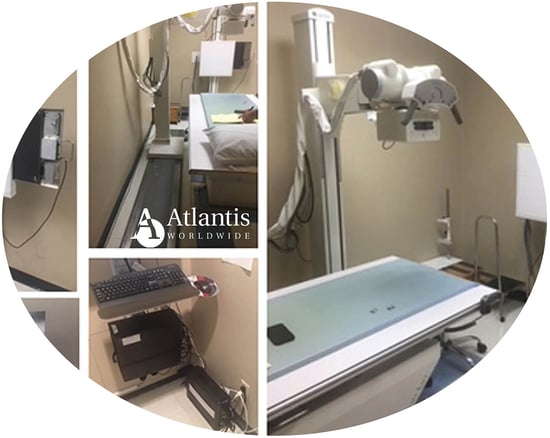So, you’re not sure there’s a rad room in your future. That doesn’t mean you shouldn’t consider creating a rad room site plan now. Why?  Because fluoroscopic procedures and plain X-rays will be radically increasing as the world population gets COVID-19 vaccines. Plus, it’s always better to plan for the future.
Because fluoroscopic procedures and plain X-rays will be radically increasing as the world population gets COVID-19 vaccines. Plus, it’s always better to plan for the future.
Rad Rooms
X-ray images are widely being used all over the globe today. While there have been huge advancements in medical imaging devices (CT, MRI, Nuclear Medicine)—there’s still a need and a demand for plain film technology. In other words, X-ray is still relevant and should fit into the future of radiology.
So what does today’s Rad Room need to look like in order to meet medical imaging demands and maintain an efficient workflow? Let’s take a closer look.
The Rad Rooms of today need to keep both patients and staff safe during fluoroscopic and radiographic procedures. During the pandemic, many rad rooms were adapted with remote control tables and fluoroscopy switches inside the control room. Wall-mounted hand sanitizers also helped keep Rad Rooms clean and disease-free. Here is a checklist that makes sense for today’s (and future) Rad Room Site Plans:
- The procedure rooms needs large floorplans that accommodate wheelchairs and hospital beds.
- There needs to be ample counter space in the control room for recording equipment, computers and PAC’s stations.
- Changing rooms should be comfortable and equipped with lockers.
- The procedure room should be equipped with a bathroom.
- Rad Rooms need high double doors to accommodate patients with IV poles and respirators.
- There should be ample storage available in locked cabinets for contrast, needles and other supplies.
- Cabinets are needed for makes, linen, gowns and face shield. Hangers for lead aprons are also necessary.
- Both the control room and procedure room need good lighting with dimmer switches.
- Walls and windows should be lead-lined.
- Rad Rooms need non-skid flooring and padded mats.
- Multiple entry points are needed in the room in case of emergency.
- Mounts should be installed for suction and oxygen lines.
- Panic buttons are needed for security.
- Don’t forget to mount hand sanitizer stations on walls.
- Allow for space for the future addition of artificial intelligence.
Analog to Digital
Upgrading Rad Rooms to digital can be expensive but is a good option. However, there are some budget-friendly options for Rad fluoro rooms with film-based technology. For example, you can take an existing analog radiographic room and use Computer Radiographic (CR) cassettes.
Radiation Safety
When devising your Rad Room Site Plan, it’s important to make sure your staff and patients will be safe. Here are a few steps:
- What are the lead lining requirements in your state? Contact the state’s radiology health department.
- Determine the size of the generator you’ll need. Review the types of procedures you’ll be performing, as well as the size of patients. Will you be performing UGI, LGI, Myelograms and voiding cysto grams? Remember, some of these procedures use in excess of five minutes of fluoro.
Talk To An Expert
Planning for Rad Room Site isn’t easy. The experts at Atlantis Worldwide are happy to provide expertise and guidance as you consider this. Plus, remember: often you can experience significant savings by using refurbished or used medical imaging equipment in your Rad Room. You’ll get the performance you need, plus the maintenance and service warranties you want.
For more information, contact Atlantis Worldwide today!
Some blogs you may have missed:
- 4 Tips on X-Ray Tubes
- CR to DR: Digital Radiographic Upgrades And Options
- The 101 On Veterinary X-Ray Equipment
- MRI Infographic: Closed Bore, Open MRI & Wide Bore
- Six Key Considerations for Radiology Equipment Selection
About the author: Vikki Harmonay



